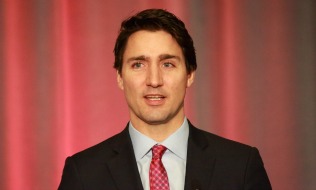

The federal government is for the second time extending its program to subsidize wages in companies hit hard by the COVID-19 pandemic, this time until at least December.
But the government is being warned it may have to move the end date into 2021.
The program is the heart of the Liberals’ promise to help Canadians get back to work, even if has to be at a slower pace, as the pandemic wanes. Speaking outside his Ottawa residence, Prime Minister Justin Trudeau announced the extension to give “greater certainty and support to businesses as we restart the economy.”
While Trudeau didn’t say how the government will reshape the eligibility rules for the program that critics have said stop some employers from getting aid they need, he promised more details in the coming days.
Read: Feds introduce 75% wage subsidy to help employers keep staff during coronavirus
The wage subsidy program was previously set to expire the first week of June but the Liberals announced an extension to the end of August in mid-May. The government has yet to share eligibility requirements for July.
Dan Kelly, president of the Canadian Federation of Independent Business, said the extension would be welcomed by many small companies that have seen costs return faster than revenues. He also pressed the need for eligibility rules to understand how to qualify.
“Not a single employer in Canada understands whether they qualify for the July wage subsidy and we’re in mid-July, so they need to do an awful lot better,” he said. “It sounds great to have an announcement to extend the subsidy, but businesses in order to use it really need to understand whether they would qualify and what the rules of the game are.”
The program covers 75 per cent of wages, up to a weekly maximum of $847, for eligible companies and non-profits. Companies must show a 30-per-cent drop in revenues, a cliff that may discourage companies from growing, lest they find themselves suddenly cut off from federal aid.
Read: Considerations around employee safety, privacy, leave during the coronavirus crisis
“You don’t want people to think that you get over the threshold and then automatically lose” the subsidy, said Hassan Yussuff, president of the Canadian Labour Congress. He also said the extension would bring some stability to reopening phases and likely bolster job gains seen over May and June.
Last week, Finance Minister Bill Morneau hinted at changes to revenue-reduction thresholds when he spoke about reducing “disincentives to growth” in the program.
Kelly said the government could consider a graduated approach with smaller subsidies at lower levels of revenue loss or dropping the requirement altogether, either of which would give employers the confidence to rehire faster, he added.
The Liberals originally saw the wage subsidy as the key tool in helping cushion the economic blow from COVID-19 by helping workers stay tied to their employers so businesses could get back to normal quickly once lockdowns lifted. The pace of spending on the program has been below expectations, with $18 billion paid to 252,370 companies as of July 6.
Instead, the budget for the program dropped as more workers accessed the Canada Emergency Response Benefit for people who lost their jobs or nearly all their hours. The $500-a-week benefit had, as of July 5, paid out almost $54.8 billion to 8.25 million people.
Read: Feds adding $2,000 benefit for Canadians out of work due to coronavirus
The budget for that program is now at $80 billion, but it’s scheduled to end in the fall. Yussuff said the government needs to soon release details on how workers without jobs will transition to the employment insurance system, which was largely supplanted by the CERB.
The government’s fiscal and economic snapshot’ last week boosted the cost of the wage subsidy program to $82.3 billion from $45 billion, in a sign of impending changes.
Perrin Beatty, president of the Canadian Chamber of Commerce, said changes to the wage subsidy “must encourage Canadians to transition” off the CERB and “create a positive incentive to return to work.”
The July 8 fiscal update noted that small employers make up the largest share of approved wage subsidy applications, with the largest numbers of employees covered in manufacturing, accommodation and food services. It also said men may be “slightly more likely” to be covered than women although there aren’t firm numbers to rely on.
Read: Could the pandemic prompt employment insurance reforms?
